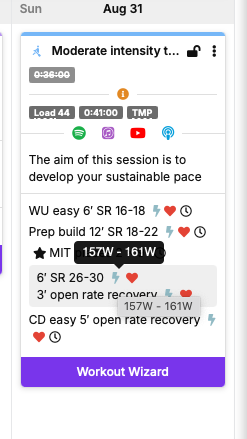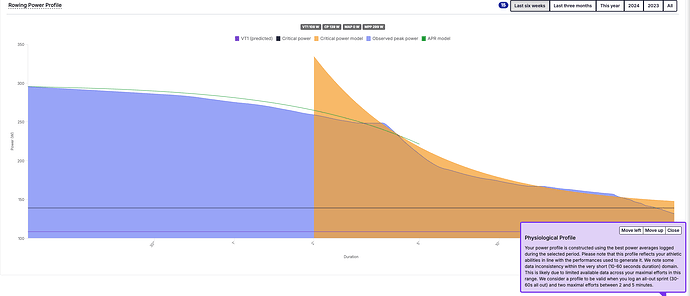Dear @Lurk sorry for my late reply.
Yes, you’re correct, the power profile should be keep updating, and it should reflect your current training intensities and your abilities.
This is a quite intriguing question, and I go back with this at the HIIT Science book. As you know HR is an internal load metric and the speed/power are external load metrics. Now, how you respond internally to an external load is quite important.
For prescription purposes, if I had an external load metric I’d use that to guide training. I understand you perfectly when you say that your thresholds do not look or feel “aligned”. For us, it became very hard to trust ALL the HR data from every device. Some athletes wear a wrist sensor, which is playing havoc at high intensities.
Main reasons people prescribe training sessions with external load metrics is that:
- They are the “truth” and materialistic aspect of the performance. As the old saying goes: “No medal has been awarded for a low HR” …
- HR is delayed with respect to the external load variable (it reacts slowly to variations in power) so it is very difficult to align those from outdoor data
- Beyond some powers/speed, HR plateaus so there is no point in reading a ratio between power:HR.
“Learning” the relationship and the correspondence between power and HR is also difficult in the lab. For sure you can conduct a test and you find your thresholds HR, but the tests (if done properly) involve ramps shorter than 9-12 minutes. We know that HR can drift with fatigue, heat, and caffeine, etc. This makes the prescription with HR even more problematic.
What I’m trying to say is that, with Athletica, I would trust more a prescription in terms of external metrics (speed/power) rather than HR. You can have a look at HR retrospectively and see if HR matched your expectations. Prescription with internal load metrics such as RPE and HR are immensely useful when:
- Your purpose is to trigger or protect specifically the internal load, because you’re in altitude, or in the heat, or you know there are reasons to control your HR first.
- when an external load metric is not available, e.g. trail running or hyrox or XC-ski.
For Athletica, that collects and process data collected in the wild, it becomes very difficult to learn the relationship between power and HR, and to determine a perfect correspondence between zone values. We are trying our best to taylor our algorithms so they can be highly individual, and in teh future we’ll see better aligned thresholds for sure. Until then, my advice is to follow the prescriptions of the external metrics.
Sorry for the long message, I hope this makes sense. Feel free to add whatever you think it’s necessary.









